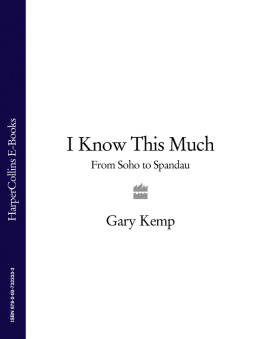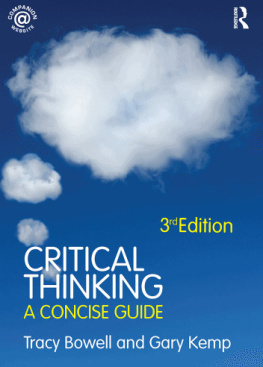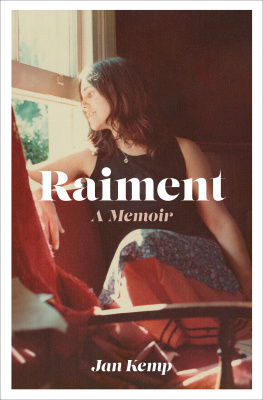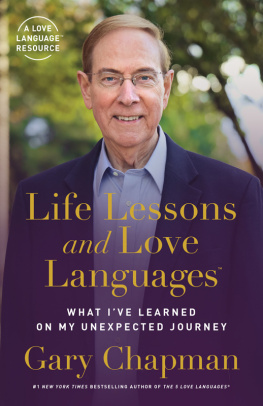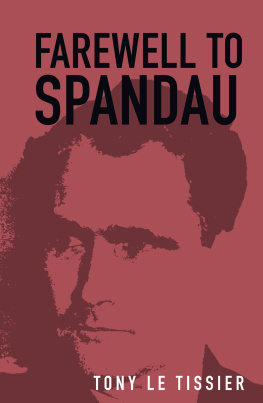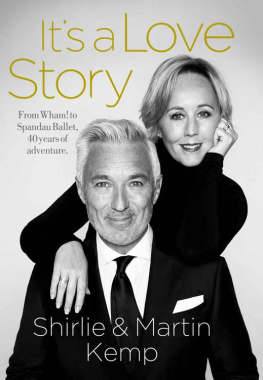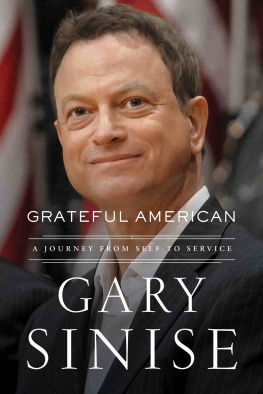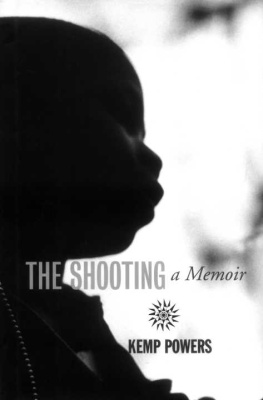
I stand opposite the house. Ive come here for somethingghosts maybebut what can I possibly expect? Others hold the key. I feel hurt by its silent disregard. The old step, shaped from childrens play, looks deserted now, unattended, no longer the stage it once was, and sadly smaller. Looking up, I can just see through the first-floor window, the window nearest the pub, the pub now gutted and boarded, empty and silent. Theres a shaft of light on the far wall of the room that reveals its size, and suddenly the geometry unfolds and begins to take shape: the two single beds pushed against each wall; the large walnut wardrobe; the Arsenal scarf hanging like a smile on the moon-landing wallpaper; and the square hole my father made in the wall to keep a caring eye on his sleeping babes. To the left, a small boy with a new guitar now sits on his bed. I should know him but hes hard to see, hard to define, so many years have distorted him. But now I can hear the lively piano coming from the pub, the pub that spills people, all noisy and lewd with Christmas beer, into the cold street. I try to ignore them, to experience the guitar, strange in my hands, but the celebrations outside disturb my concentration. Laying it down on the bed, I cross over to the window to see what it is.
And suddenly, there I am.
To Finlay, Milo and Kit
I have nothing to say, entirely, simply, and with solidity of myself, without confusion, disorder, blending, mingling.
Montaigne
The annoying thing is that critics in twenty years time will probably write a great, nostalgic, dewy-eyed retrospective on how good it was in these clubs in London and how these innovators were doing this that and the other.
Steve Dagger (Sounds, 1980)
Time, he flexes like a whore, Falls wanking to the floor; His trick is you and me, boy.
David Bowie
LONDON, 27 JANUARY 1999
T here are moments in life when your entire confidence depends on the coordination between you and an inanimate object. Symbolically, and actually, the problem was a noose around my neck. Every time I knotted my tie the pointy bit was either above or below my waistbandtoo long and I felt like an accountant, too short and I resembled a Soho bartender. I rip it off again, wipe the back of my hand across my forehead and try to steady myself before another attempt. Id earlier decided to go for the pink Turnbull and Asser shirt, freshly depinned, but Id changed my mind and broke sweat struggling to remove my cufflinks in order to change into the more sober, white one. Pink had looked too presumptuous; a little cocksure. I dont want to give that impression.
Unfortunately clothes had always been an obsession. As a boy there had been my snake belt and Trackers, with their compass-in-the-heel bonus, then tears spilt over desired Ben Shermans and Budgie jackets; two-tones; brogues; toppers; the thrill of my first Bowie loons; cheesecloth; plastic sandals; mohair jumpers; Smiths; straights; high-tops; GI chic; loafers; kilts; Annello & Davide ballet pumps, and all the madness that was the eighties dressing-up box. The event determines the clothes, but the execution of putting them on prepares you for it, and right now Im suffering from nerves and in a bit of a state about the length of my tie.
I struggle with the knot in the mirror and wonder if any of this really matters. What the hell am I thinking about! My hairs freshly trimmed but my face looks tired and drawn from lack of sleep. Last night Id woken again to play out potential moments from the trial in my head and had not slept since 4 a.m. God, this isnt working! A flush of insecurity pours into my chest and I feel sick down to my knees, but the doorbell rings (was that it earlier?) and I pull up the heart-shaped knot, throw on my jacket and coat and head downstairs. My tie will have to do. So, I hope, will my truth.
Ian Mill fills the room. Not just physicallyhe has a large, well-stocked frame, a picture of his own successbut also in terms of his charactera Pickwickian presence born of public-school confidence and class. Spy should have drawn him for a Victorian issue of Vanity Fair. He picks up a handful of folders from his aching desk, buries them into his obediently open briefcase and, with a swipe of his hand, clears his barristers wig from the table, places it on the top of the folders and closes his case with a snap.
Gentlemen?
I wonder if hed put the tonal question mark after Gentlemen for other, more suspicious reasons. Here, in the theatre of law, stands the last bastion of the class system. Accents are prepared and nurtured, polished and loaded, before being sent out to pronounce judgement upon the fools of the world. I gaze through the window on to the redbricked Inns of Court, survivors of the Great Fire of London and the Blitz, serving as historic reminders of the eternity of order. I find a certain comfort in all of this, and a genetically encoded forelock is being pulled as Steve Dagger and I follow Ian and our team out of the chambers and into the cold bright day that lights the Inns with a nostalgic beauty. As we walk towards the court I feel myself locked into a crashing inevitability and envy the otherness of passing people, on their way to meetings, coffee, loved ones. But Ian bestrides the Strand and its all I can do to keep up. We are about to enter his arena.
The Gothic, grey-stone edifice that is the Royal Courts of Justice could be the grand entrance to Oz, overdressed with multiple arches and varied ornate carvings, with a dark spire that points its righteous finger to heaven. But people dont come here to ask for a heart or courage, just judgement, and, of course, some money. Outside, a pack of media jostle for a statement and some pictures, and I submit myself to the hungry lenses, suddenly relieved that I hadnt gone for the pink.
We pass through security, and make our way to Court 59. I dread my first meeting with the others. Will it all seem ridiculous when it happens? Will they drop the whole thing on seeing me and realise how preposterous it all is? We arrive at a tiny anteroom and Ian vanishes, leaving Dagger and me, and my two young lawyers, feeling temporarily rudderless. He returns dressed for his performance: wig pressed snugly over his boyish blond waves; white barrister bands tight around his pink neck, and a flowing, long black gown. I feel sick again and wish Id never read Bleak House.
He resettles his wig; it seems to be focusing his mind. Try to sit at the front. Good to be seen clearly by the judge.
Our Queens Counsel, Barbara Dohmann, arrivesa small, middleaged German woman whom Im glad to hear is referred to in the business as Dobermanand we shuffle into the aesthetically neutered courtroom. Im relieved to see that the others arent here yet and, following Ians thrusting finger, we slide on to the front bench. Dagger squashes up to my right. This is the man whod helped to create Spandau Ballet; who has lived, breathed and dreamt it as much any one of us. The rejection he has suffered would have been just as painful, the accusations worse.
He prods me, and with a nod points out their barrister, our adversary, Andrew Sutcliffe. Sharp and feral, his thin nose hovers importantly over his opening statement and I wonder how much pleasure he anticipates from my destruction. Beyond him, in the public seats, I notice some familiar faceslong-term followers of the band: fans. They look excited as they settle into their spaces and arrange their bags between their legs. Next to them are members of the press, notebooks and pens appearing from mucky pockets, and I can feel them begin to scrutinise me and I wonder how you look when youre about to be sued out of your home.

